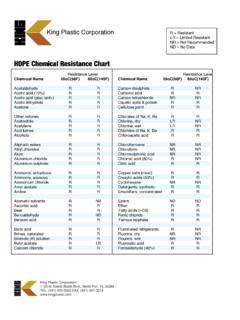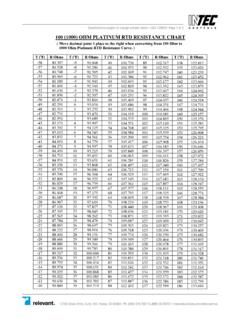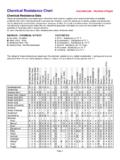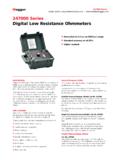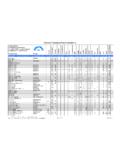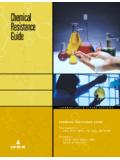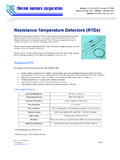Transcription of The FAO Action Plan on Antimicrobial Resistance …
1 THE FAO Action plan ON. Antimicrobial Resistance . 2016-2020. Supporting the food and agriculture sectors in implementing the Global Action plan on Antimicrobial Resistance to minimize the impact of Antimicrobial Resistance The FAO Action plan on Antimicrobial Resistance 2016-2020. Supporting the food and agriculture sectors in implementing the Global Action plan on Antimicrobial Resistance to minimize the impact of Antimicrobial Resistance FOOD AND AGRICULTURE ORGANIZATION OF THE UNITED NATIONS. Rome, 2016. The designations employed and the presentation of material in this information product do not imply the expression of any opinion whatsoever on the part of the Food and Agriculture Organization of the United Nations (FAO) concerning the legal or development status of any country, territory, city or area or of its authorities, or concerning the delimitation of its frontiers or boundaries.
2 The mention of specific companies or products of manufacturers, whether or not these have been patented, does not imply that these have been endorsed or recommended by FAO in preference to others of a similar nature that are not mentioned. The views expressed in this information product are those of the author(s) and do not necessarily reflect the views or policies of FAO. ISBN 978-92-5-109392-4. FAO, 2016. FAO encourages the use, reproduction and dissemination of material in this information product. Except where otherwise indicated, material may be copied, downloaded and printed for private study, research and teaching purposes, or for use in non-commercial products or services, provided that appropriate acknowledgement of FAO as the source and copyright holder is given and that FAO's endorsement of users' views, products or services is not implied in any way.
3 All requests for translation and adaptation rights, and for resale and other commercial use rights should be made via or addressed to FAO information products are available on the FAO website ( ) and can be purchased through The FAO Action plan on Antimicrobial Resistance Contents Foreword iv Preface vi Introduction 1. Antimicrobial Resistance a global threat 1. Antimicrobials use in agriculture 1. Antimicrobial Resistance a global and multisectoral issue 2. Role of FAO in addressing Antimicrobial Resistance 2. The Fao Action plan 4. Focus Area 1: Improve awareness on Antimicrobial Resistance and related threats 6. Focus Area 2: Develop capacity for surveillance and monitoring 7. of Antimicrobial Resistance and Antimicrobial use in food and agriculture Focus Area 3: Strengthen governance related to Antimicrobial use 9. and Antimicrobial Resistance in food and agriculture Focus Area 4: Promote good practices in food and agriculture systems 11.
4 And the prudent use of antimicrobials Implementation mechanisms 13. Further reading 13. Related links 13. Annex 1. Resolution 4 - 2015 14. iii The FAO Action plan on Antimicrobial Resistance FOREWORD. Increasing global Antimicrobial Resistance (AMR) is a major threat to human and animal health. It endan- gers modern human and veterinary medicine and undermines the safety of our food and environment. Antimicrobials play a critical role in the treatment of diseases of farm animals (aquatic and terrestrial). and plants. Their use is essential to food security, to our well-being, and to animal welfare. However, the misuse of these drugs, associated with the emergence and spread of Antimicrobial - resist- ant micro-organisms, places everyone at great risk. The risk appears particularly high in countries where legislation, regulatory surveillance and monitoring systems on the use of antimicrobials, and the prevention and control of Antimicrobial Resistance , are weak or inadequate.
5 This is where FAO plays a key role in supporting governments, producers, traders and other stakeholders to move towards the responsible use of antimicrobials in agriculture, thus help- ing reduce Antimicrobial Resistance in agricultural systems. FAO's Thirty-ninth Conference (in June, 2015) adopted Resolution 4/2015 on AMR which recognized that it poses an increasingly serious threat to public health and sustainable food production, and that an effective response should involve all sectors of government and society. To support the implementation of Resolution 4/2015,1 the FAO Action plan on AMR addresses four major Focus Areas: improve awareness on AMR and related threats;. develop capacity for surveillance and monitoring of AMR and AMU ( Antimicrobial use) in food and agriculture;. strengthen governance related to AMU and AMR in food and agriculture;. promote good practices in food and agricultural systems and the prudent use of antimicrobials.
6 This Action plan supports the WHO-led Global Action plan on Antimicrobial Resistance2 in highlighting the necessity of adopting a One Health approach, with the involvement of public health and veteri- nary authorities, the food and agriculture sectors, financial planners, environmental specialists, and con- sumers. The objective is to assist Member States to develop (by May, 2017) and implement multisector National Action Plans to combat AMR. 1 Report of the Conference of FAO. Thirty-ninth Session, Rome, 6-13 June 2015 2 Global Action plan on Antimicrobial Resistance iv The FAO Action plan on Antimicrobial Resistance FAO works closely with the World Health Organization (WHO) and the World Organisation for Animal Health (OIE) in a tripartite initiative, as well as with other partners, reference centres, academia, and regional groups. It recognizes that a collaborative approach between different sectors, and both political and economic entities and disciplines, is essential in order to address AMR effectively.
7 We must confront the silent crisis of Antimicrobial Resistance together, today. Maria Helena Semedo Deputy Director-General, Coordinator for Natural Resources v The FAO Action plan on Antimicrobial Resistance Preface In recognition of the growing problem of Antimicrobial Resistance , the World Health Organization pre- sented to its Health Assembly a draft global Action plan on Antimicrobial Resistance (A68/20),3 which was adopted by the Sixty-eighth World Health Assembly as resolution in May The World Health Assembly called for strengthened collaboration between the Food and Agriculture Or- ganization of the United Nations (FAO), the World Organisation for Animal Health (OIE) and the World Health Organization (WHO) to address Antimicrobial Resistance (AMR) in the context of One Health . FAO actively contributed to the development of the WHO-led Global Action plan , which requests FAO.
8 To support the implementation of measures in the food and agriculture sectors to combat Antimicrobial Resistance . The commitment of FAO Members to work on AMR was confirmed by the adoption of Resolution 4/2015 at the Thirty-ninth Session of the FAO Conference in June 2015. This resolution is a call to Action to both FAO Members and the Organization itself to address the multifaceted aspects of mitigating both the impact on, and the contribution of, the food and agriculture sectors to the threat posed by Antimicrobial Resistance . This document outlines the FAO Action plan on Antimicrobial Resistance , which describes how the Or- ganization will implement Resolution 4/2105 (Annex 1). The plan was developed by a multidisciplinary FAO team to ensure that all relevant dimensions, including terrestrial and aquatic animal health and production, crop production, food safety, standard setting and legal aspects, are considered and that it is embedded within the Strategic Programme of FAO.
9 Framing FAO's work on AMR, it informs FAO. Members and partners of the Organization's approach and goals over the next five years 3 See document WHA68/2015/REC/1, for the resolution and Annex 3, for the global Action plan (available at ). 4 WHO. 2015a. Global Action plan on Antimicrobial Resistance . Available at vi The FAO Action plan on Antimicrobial Resistance Introduction Antimicrobial Resistance a global threat The availability and use of Antimicrobial drugs in terrestrial and aquatic animals and in crop production is essential to both health and productivity. It contributes to food security, food safety and animal wel- fare, and in turn, to the protection of livelihoods and the sustainability of animal and crop production. However, there are growing global concerns about Resistance to Antimicrobial drugs, including antibi- otics, amid fears that Antimicrobial Resistance (AMR) will reverse previous gains.
10 In humans, AMR also threatens to undo decades of improvements in human health care outcomes, with direct impacts on the ability of people to live full and productive lives. AMR refers to micro-organisms bacteria, fungi, viruses, and parasites that have acquired Resistance to Antimicrobial substances. While this phenomenon can occur naturally through microbial adaption to the environment, it has been exacerbated by inappropriate and excessive use of antimicrobials. Various factors are involved, such as: i) lack of regulation and oversight of use; ii) poor therapy adherence; iii). non-therapeutic use; iv) over-the-counter or internet sales, and; v) availability of counterfeit or poor-qual- ity antimicrobials. The consequences of AMR include the failure to successfully treat infections, leading to increased mortality; more severe or prolonged illness; production losses; and reduced livelihoods and food security.










